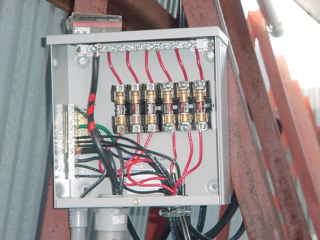Sue Kateley, the executive director of the California Solar Energy Industries Association, a trade group, said DC cutoffs create danger because they mislead firefighters.
The solar panels remain energized as long as the sun is up, and they even retain some electricity when it's dark. Putting a cutoff on the roof only neutralizes the wire running from the panels to the inverter box, but it doesn't eliminate the danger to firefighters.
"It's that perception of safety we want to avoid; they think they're safe, when there's potential from getting a shock, and falling off the roof," she said.


